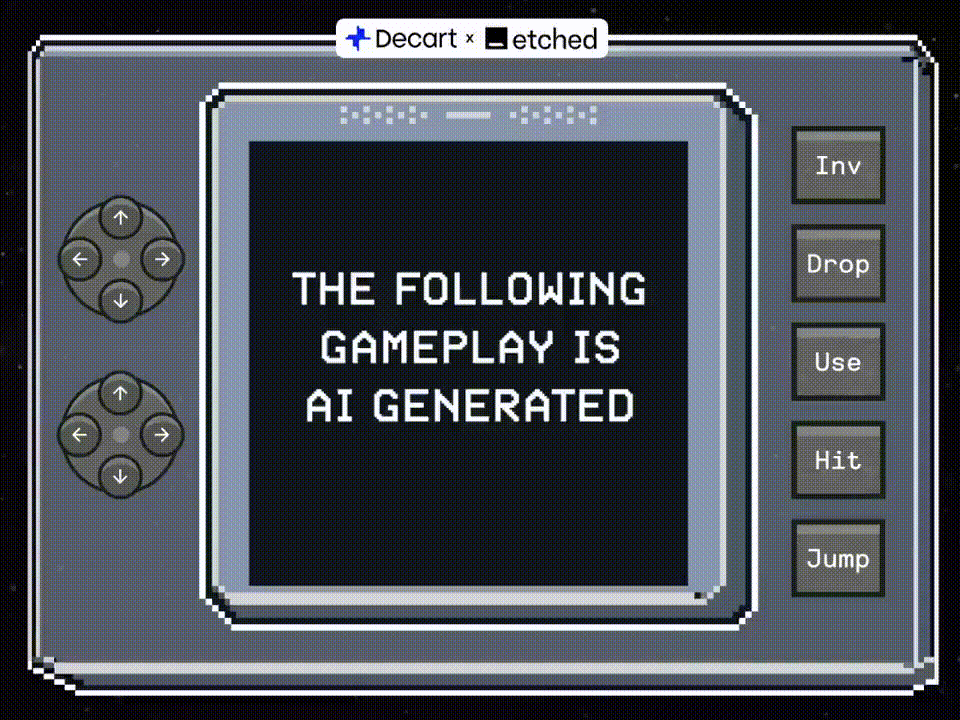Decart, an Israeli AI startup, has emerged from stealth mode with a groundbreaking announcement: the launch of Oasis, which it claims is the first playable “open-world” AI simulation. This model represents a significant leap forward in how video games can be generated and experienced, promising a dynamic and interactive environment that evolves based on player input.

Introduction to Oasis
Oasis utilizes advanced AI techniques to create an immersive gaming experience reminiscent of Minecraft. Unlike traditional games that rely on pre-defined environments and scripts, Oasis Minecraft AI generates its world in real-time based on user actions. This innovative approach allows players to engage with a game that adapts dynamically as they explore and interact with their surroundings.

How Oasis Minecraft AI Works
Oasis Minecraft AI operates on a principle known as next-frame prediction. By analyzing millions of hours of Minecraft gameplay videos and corresponding user actions, the Decart AI model learns to simulate game physics, rules, and graphics instantaneously.
- Real-Time Generation: As players move their characters, the environment is created on-the-fly, offering a unique experience each time.
- User Input Driven: The game responds directly to keyboard and mouse movements, making interactions feel more engaging and personal.
- Physics Simulation: The AI mimics the physical rules of the game world, allowing for realistic interactions.
Despite its innovative design, initial feedback indicates that Oasis Minecraft AI still has room for improvement. Players have reported issues such as low resolution and the model's tendency to "forget" previously placed objects or structures—an artifact of its current limitations in maintaining object permanence.

Future Potential and Challenges
Decart envisions a future where Oasis Minecraft AI can deliver high-fidelity graphics—up to 4K resolution—thanks to upcoming advancements in hardware. The company is collaborating with Etched on specialized AI accelerator chips that promise to enhance performance significantly. These chips are designed specifically for AI tasks, focusing on inference rather than training, which could lead to substantial improvements in efficiency and responsiveness.
- Hallucinations: The AI's tendency to generate unexpected changes in the environment can disrupt gameplay. For instance, players may find that objects they placed have transformed into entirely different elements when they turn around.
- Hardware Limitations: Currently reliant on Nvidia H100 GPUs for its demo, Decart aims to transition to more powerful custom chips that could support larger player bases and more complex interactions.
Implications for Gaming
The introduction of Oasis Minecraft AI could herald a new era in gaming where player experiences are not only reactive but also deeply personalized. Imagine being able to dictate game elements through simple voice commands or having the environment shift based on your narrative choices. This level of interactivity could redefine how stories are told in video games.
Moreover, as generative AI continues to evolve, we might see applications beyond gaming—such as real-time content generation for movies or virtual reality experiences—blurring the lines between creator and consumer.

Conclusion
While Decart AI Minecraft's Oasis is still in its early stages and faces several hurdles before it can reach its full potential, it represents an exciting frontier in AI-driven gaming technology. As developers refine this model and tackle existing challenges, gamers can look forward to increasingly immersive experiences that adapt uniquely to their interactions. For more insights into the latest developments in AI technology and tools, visit AIPURE.



